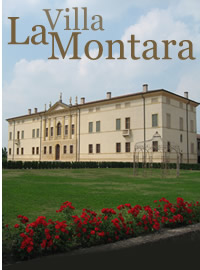The history
The Villa
Corte la Montara was built in 1500 in the shape of a bulky building, very simple shaped, with two front towers (“colombare”) as a defence.
The complete settlement included: a small house situated at the western side of the mansion and two thatched- roof cottages to keep the workers’ tools.
The first picture of the Corte la Montara is in a drawing by Glisenti of 1547, ordered by the first owners Lorenzo and Carlo Sartori.
The following century, la Montara was bought by the Carli family. A map of 1620 witnesses a clear change of the building: one of the two “Colombare” was removed and the first “barchessa” made its appearance.
Between the end of the seventeenth and the beginning of the eighteenth century, the main building changed completely both in shape and use: the fashion of that time suggested to change country side houses into luxury villas similar to city palaces. La Montara was then changed into an elegant building with a central body decorated with “bugnato” in the lower part and with pilaster strips in the upper part; an arch shaped portal with tufa doorposts and a tympanum embellished with five statues of divinities attributed to Lorenzo Muttoni, the same sculptor of other two statues, Apollo and Clizia, located inside the house.
The frescoes of the inside rooms are partly painted from Marco Marcola, who worked for the Carli family at Palazzo Carli in Verona; and who often worked together with Muttoni in several Villas of the neighbourhood.
While the restoration of the frescoes was in progress, a small damaged area of the wall revealed the presence of a previous cycle of remarkable frescoes; they date back to the sixteenth century, back to most ancient life of the building.
After the Carli family, the villa has had several subsequent owners: the Cagnoli family, the Consolo family, and then the Pompei family.
In the 30th of the 20th century, the estate was bought by Nicola Arturo Tosadori, who left the property to the daughters Adelina and Angiola. Finally Adelina left the property to her sons Ettore and Paolo.
The private Oratory of the Carli family
Inside the walls of the garden there is a chapter dedicated to San Carlo Borromeo, built by Alessandro Carli and was already in use in 1679 when the family received the visit of the Bishop Sebastiano Pisani II.
It is a rectangular room with a small bell tower at the back, with a remarkable eighteenth century altar, embellished by polychrome marbles.
The altar-piece is a precious painting of the Virgin with child among clouds, surrounding by Saint Josef, Saint Charles and, on the right, Saint Rocco showing his wounded leg.
This work is attributed to Agostino Ugolini and it was painted at the end of the eighteenth century.
The attribution is based on some characteristic details and on the closed relationship between Ugolini and Conte Carli, whom was also drowned from the painter in a portrait of 1796.
For security reasons and also to preserve it with the right temperature and humidity, the altar-piece is, at the moment, inside the Villa.
The garden
Great attention has been given to the green space around the Villa, the garden has been recreated with roses, box hedges to frame the meadow, trees and fruit tree.
To complete the stenographic effect of the garden, a modern “gazebo” and a spectacular fountain have been built. |
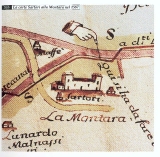

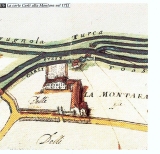
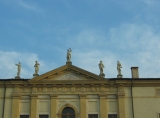
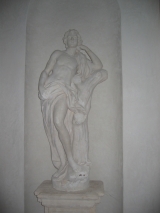
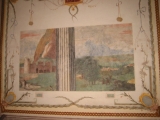
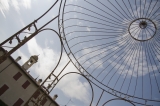 |
